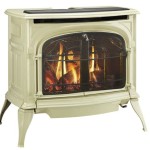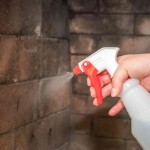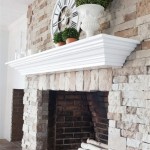Glass Fireplace Tile Gallery: A Comprehensive Guide to Design and Selection
Glass fireplace tile is an increasingly popular choice for homeowners and designers seeking to enhance the aesthetic appeal and functionality of their fireplaces. Its versatility, durability, and reflective properties offer a unique blend of modern sophistication and timeless elegance. This article provides a comprehensive exploration of glass fireplace tile, covering design considerations, material properties, installation techniques, and maintenance practices.
Understanding the Allure of Glass Fireplace Tile
The appeal of glass fireplace tile lies in its ability to transform a traditional fireplace into a captivating focal point. The inherent reflective qualities of glass create a dynamic interplay of light and shadow, adding depth and dimension to the surrounding space. The smooth, non-porous surface of glass also makes it exceptionally easy to clean and maintain, resisting stains and moisture damage. Furthermore, glass tiles are available in a vast array of colors, shapes, and sizes, allowing for virtually limitless design possibilities.
Compared to other tiling materials, such as ceramic, porcelain, or stone, glass offers a distinct advantage in terms of aesthetic flexibility. Its ability to mimic other materials or stand out as a unique entity allows designers to achieve various looks, from minimalist modern to opulent traditional. The use of textured or iridescent glass tiles can further enhance the visual interest, creating a truly bespoke fireplace design.
Beyond aesthetics, glass is a sustainable and environmentally friendly choice. Many glass tiles are manufactured using recycled materials, reducing waste and minimizing the environmental impact. Its durability ensures a long lifespan, reducing the need for frequent replacements and further contributing to its sustainability profile.
Key Design Considerations for Glass Fireplace Tile
Selecting the appropriate glass fireplace tile requires careful consideration of several design factors, including the overall style of the room, the size and shape of the fireplace, and the desired aesthetic effect. A cohesive design approach is crucial to ensure that the fireplace complements the existing décor and enhances the overall ambiance of the space.
Color Palette:
The color of the glass tile plays a significant role in defining the character of the fireplace. Neutral tones, such as white, gray, or beige, create a clean and contemporary look, while bolder colors, such as blue, green, or red, add a touch of drama and personality. The color should complement the existing wall color, furniture, and accessories. Mosaic patterns using a range of hues can add visual complexity and personality.Tile Size and Shape:
The size and shape of the glass tiles can significantly impact the overall aesthetic. Larger tiles create a sleek and modern look, while smaller tiles allow for more intricate mosaic patterns. Rectangular or square tiles offer a classic and versatile option, while unique shapes, such as hexagons or triangles, add a distinctive touch. Consider the scale of the fireplace when selecting tile size; larger fireplaces can handle larger tiles without appearing overwhelmed, while smaller fireplaces may benefit from smaller, more delicate tiles.Texture and Finish:
Glass tiles are available in a variety of textures and finishes, including smooth, textured, frosted, and iridescent. Smooth glass tiles offer a clean and reflective surface, while textured tiles add depth and character. Frosted glass provides a softer, more subtle look, while iridescent glass creates a shimmering effect that changes with the viewing angle. The choice of texture and finish should align with the desired aesthetic and the overall style of the room.Layout and Pattern:
The layout and pattern of the glass tiles can further enhance the design. Simple grid patterns offer a clean and contemporary look, while more complex patterns, such as herringbone or chevron, add visual interest and sophistication. Vertical or horizontal layouts can emphasize the height or width of the fireplace, respectively. Mosaics allow for intricate designs and personalized expressions.Material Properties and Installation Techniques
Understanding the material properties of glass fireplace tile is essential for ensuring proper installation and long-term performance. Glass is a durable and non-porous material, but it is also brittle and susceptible to thermal shock if not properly installed. Choosing the correct adhesive, grout, and installation techniques is crucial for preventing cracks, chips, and other damage.
Tile Material Composition:
Typically, glass tiles are made from either recycled glass or virgin glass. Recycled glass tiles offer an environmentally friendly option without sacrificing durability or aesthetics. It is critical to ensure that the glass tile is rated for use around fireplaces and can withstand the temperatures involved. Tempered glass is far more heat resistant than standard glass and often required for fireplace applications, especially close to the firebox itself.Adhesive Selection:
Selecting the appropriate adhesive is critical for ensuring a strong and durable bond between the glass tiles and the fireplace surface. A high-quality thin-set mortar specifically designed for glass tile is recommended. The adhesive should be heat-resistant, waterproof, and non-staining. It is important to follow the manufacturer's instructions carefully to ensure proper mixing and application.Grout Selection:
The grout fills the spaces between the glass tiles and provides a waterproof and aesthetically pleasing finish. Epoxy grout is often preferred for glass fireplace tile due to its superior water resistance, stain resistance, and durability. Cement-based grout can also be used, but it requires sealing to prevent water absorption and staining. The grout color should complement the glass tiles and the overall design of the fireplace.Installation Process:
The installation process typically involves several steps, including preparing the fireplace surface, applying the adhesive, setting the tiles, grouting the joints, and cleaning the surface. The fireplace surface should be clean, dry, and level before applying the adhesive. A notched trowel is used to apply the adhesive evenly to the surface. The glass tiles are then carefully placed and pressed into the adhesive. After the adhesive has cured, the grout is applied to the joints using a grout float. The excess grout is then removed with a damp sponge. Finally, the surface is cleaned with a soft cloth to remove any remaining grout residue.Professional Installation:
While DIY installation is possible, it is generally recommended to hire a professional tile installer, especially for complex designs or installations involving unusual shapes or angles. A professional installer has the experience and expertise to ensure that the glass tiles are properly installed and that the fireplace meets all safety and building code requirements. They can also offer valuable advice on tile selection, design, and maintenance.Maintenance and Care of Glass Fireplace Tile
Proper maintenance and care are essential for preserving the beauty and longevity of glass fireplace tile. Regular cleaning and preventative measures can help prevent stains, scratches, and other damage. Unlike porous tiles, glass is easy to clean and doesn't require harsh chemicals.
Regular Cleaning:
Glass fireplace tile should be cleaned regularly to remove dust, soot, and other debris. A mild soap and water solution is typically sufficient for routine cleaning. Avoid using abrasive cleaners, scouring pads, or harsh chemicals, as these can scratch or damage the surface of the glass tiles. A soft cloth or sponge should be used to wipe the surface of the tiles. For stubborn stains, a glass cleaner or a solution of vinegar and water can be used.Preventative Measures:
To prevent stains and damage, avoid placing flammable materials or excessive heat sources directly against the glass tiles. Use a fireplace screen to protect the tiles from sparks and embers. Promptly clean any spills or splatters to prevent staining. Avoid using sharp objects or abrasive materials near the glass tiles. Periodically inspect the grout joints for cracks or damage and repair them as needed.Addressing Stains and Scratches:
If stains do occur, try using a specialized glass cleaner or a solution of baking soda and water. Gently rub the stain with a soft cloth until it is removed. For minor scratches, a glass polishing compound can be used to restore the surface. Deep scratches may require professional repair or replacement.By following these maintenance and care guidelines, homeowners can ensure that their glass fireplace tile retains its beauty and functionality for many years to come. This proactive approach safeguards the investment and keeps the fireplace looking its best, continuing to be a captivating centerpiece within the home.

Glass Tile Fireplace Modern Living Room Chicago By The Gallery Houzz

Fireplace Tile Design Westside And Stone

Mir Mosaic Manufacturer And Distributor Of High Quality Glass Natural Stone S Metal Mosaics

53 Best Fireplace Tile Ideas And Designs With S For 2024 Surrounds Surround Feature Wall

Fireplace Tile Design Westside And Stone

Fireplace Tile Ideas Designs To Inspire You

Fireplace Tile Ideas Designs To Inspire You

Fireplace Tile Design Ideas For 2024 The

Design Ideas Fireplaces Artistic Tile

Glass Tile Archives Queen City Stone Tiles
Related Posts








